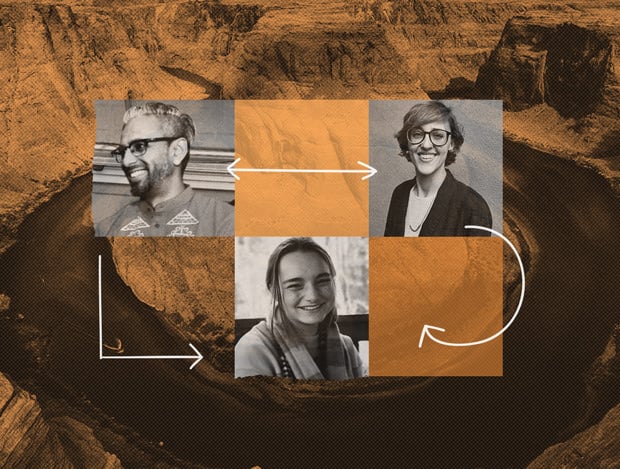The Colorado River provides essential water to millions across the American West — but the river is running dry. Here’s how we save it.
The Colorado River provides water to 40 million people across 7 states and nearly 30 indigenous tribes. Several factors have together led to dwindling water supplies, driving cuts and negotiations on states’ use. But these don’t go far enough, because they don’t address the root of the crisis.
This year, Food & Water Watch kicked off campaigns to protect this water resource in two Colorado River Basin states, California and New Mexico. And this month, we released a new report getting to the heart of this complex crisis.
…he met with folks who “had literally nothing coming out of their faucets, while their communities were surrounded by lush green fields, agricultural fields.”
To detail our research and organizing efforts, we hosted a virtual Livable Future Live event with researcher Kat Ruane, California Director Chirag Bhakta, and New Mexico organizer Alexa Moore. At this event, we dove into the Colorado River crisis and what the region needs to start recovering.
The Roots of the Colorado River Crisis
As the Colorado River and its reservoirs fall to crisis levels, we can point to one obvious driver: climate change and the region’s related megadrought. But climate change worsens problems that go back decades.
For one, the region’s outdated water rights system puts industrial agriculture before municipal and residential use. To make matters worse, it has incentivized water-intensive cash crops that don’t make sense for the region.
These agricultural uses are a major — and majorly unaddressed — contributor to the current crisis.
One main offender: alfalfa. Irrigating this thirsty crop in the Basin uses 2.2 trillion gallons of water each year. That could fill the annual indoor water needs of all the Basin’s 40 million residents — 3.5 times over.
This alfalfa is used almost entirely for feeding livestock, mostly on factory farms and mega-dairies in the U.S. and abroad. As Kat explains, this creates a dangerous feedback loop connecting the water shortages to factory farming:
As the alfalfa goes to these mega-dairies, these mega-dairies gain access to a relatively cheap crop. They can continue to expand, they can grow their herds, they can benefit from that. In turn, that encourages more alfalfa to be produced. That’s kind of this vicious little cycle that just keeps going at the expense of everyone else.
Water Shortages Take a Dire Toll on People in the Basin
This state of affairs is devastating for families who depend on the Colorado River or on groundwater wells that Big Ag is draining due to water shortages on the river.
Chirag spoke about visiting Tombstone Territory in California’s Central Valley earlier this year. There, he met with folks who “had literally nothing coming out of their faucets, while their communities were surrounded by lush green fields, agricultural fields.”
Meanwhile, in New Mexico, many folks depend on groundwater. When a wildfire forced firefighters to draw on wells depleted from years of agricultural abuse, the town of Buena Vista lost its water.
Residents “had to walk down to irrigation ditches to fill up buckets of water and haul them home just to use their toilets,” Alexa told us. A new well for the town would cost half a million dollars. But they’d have no guarantee that the water supply would last, as Big Ag continues to dig deeper wells of its own.
The Changes We Need to Save the Colorado River
To save the Colorado River, we must rethink water use and stop water abuse. Our elected officials must ban factory farms and mega-dairies, stop alfalfa production, and transition growers to crops that make sense for the region.
We’re taking on several national fights to make that happen, including
- Fighting for a fair Farm Bill, which distributes billions in federal funds and influences what crops get grown and how;
- Passing the Farm System Reform Act, which would ban factory farms and support farmers’ transition to better models; and
- Advocating for water to be treated as a public trust resource, not a cash cow for thirsty corporations.
At the state level, we’re targeting elected officials who can make the changes we need. In California, we’re calling on Governor Newsom to declare a moratorium on factory farms and alfalfa planting. And in New Mexico, we’re pressuring […]
Full article: www.foodandwaterwatch.org

